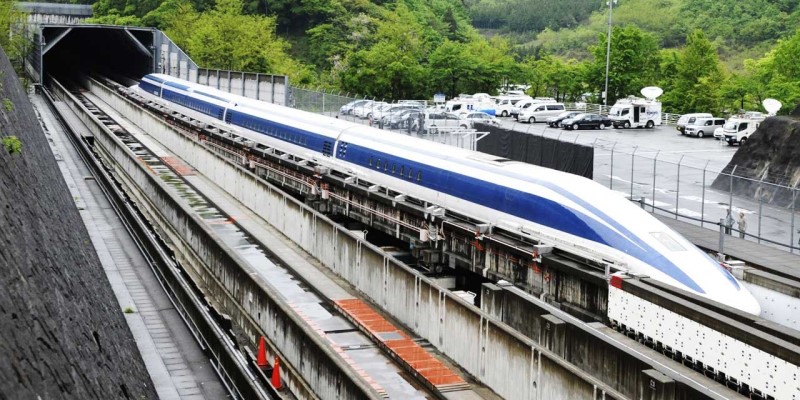7 Things We Found Amazing and Unique in Japan

Would you agree with our amazing finds in Japan?
We just finished a short trip to the Land of the Rising Sun and needless to say, it was more fascinating and awesome than we expected it to be. Japan has always been on top of every travelers’ bucket list and there’s no question why. So, if you have always been a fan of everything Japanese, here’s a list to whet your curiosity while you plan your ultimate getaway to this amazing country.
1. World’s weirdest Kitkat flavors

With over 300 limited-edition regional and seasonal flavors since the year 2000, it’s no surprise that Kitkat has become somewhat of an iconic souvenir for tourists visiting Japan. Varieties range from the usual (milk chocolate, dark chocolate and strawberry) to the unusual (maccha milk, crème brulee and sake) to the downright weird (grilled potato, soy sauce and French salt). What’s the best selling flavor, you ask? It’s actually soy sauce.
Some Kitkat flavors are only available in selected regions in Japan. If you find one while touring around, buy it as you might not get the chance later on. The limited-edition ones are most likely not available in the airport or department stores.
2. Most efficient train system in the world

Rail transport is the number one means of commute for both tourists and locals around Japan. An estimated 7 billion passengers ride the train on a yearly basis but despite the massive load and traffic, the average delay is pegged at only 0.6 minutes in a fiscal year making it the most punctual and efficient in the world. Delays are so uncommon that certificates are handed out to passengers for “proof” to their schools or employers if such incident does occur.
There are different types of express trains that you will encounter when using the railway. Some rides such as the “semi-express” and “rapid” have fewer stops and will skip stations along the way. Express train maps are available on all the train platforms to guide tourists on which ride to take.
Efficient as it is, for many visitors, making heads and tails of the numerous routes, types and train operators can be quite a daunting task. To make rail navigation easier, use Google to search for possible routes (ie. Nippombashi station to Kyoto Station). Several options will be displayed with information on the time, transfers and fare price. Internet connection is required to do this.
3. Immaculate and hi-tech toilets

Instruction manuals do not often come to mind when using the toilet but you might find yourself looking for one when in Japan. It’s not uncommon to be surprised (and ultimately confused) with the dizzying array of buttons, lights and sounds that you encounter inside the bathroom. Some of these toilets are so hi-tech that most of the features you commonly find in Japan are not available anywhere else. Availability is also not a problem as you can find bathrooms everywhere. And just like everything else in this country, you can expect most (if not all) toilets to be clean, convenient and modern.
Most public bathrooms offer 2 types of toilets: Western and Traditional. Traditional toilets require the user to squat over it facing the hood. Stall doors would usually have signs indicating whether it is western or traditional type toilet.
4. Fake Food displays

Sampuru or what is commonly known as fake food has been a staple display in front of Japanese restaurants for almost a century. This is a big industry in Japan garnering billions of yen in revenue and manufacturers fiercely guard their trade secrets from competitors. A complete menu of fake food display can cost a restaurant millions in yen. Expert artisans are able to mold realistic looking food out of wax and plastic and the end result looks so good you’d want to eat it!
Looking at a restaurant’s sampuru display is a good way to get an idea on what food is offered, serving size and side dishes that come with a meal. Take a picture of the food you want and show this when ordering. It saves you from a lot of trouble trying to relay your orders when you and your server do not speak the same language.
5. Tourist Information Center

Are you a first time tourist visiting Japan and have no idea how and where to start your epic adventure? Just your luck! There’s probably a Tourist Information Center near you and they are all the help you need to get you going. They have multi-lingual personnel who can provide you with information on event dates, transportation around the area and popular tourist destinations.
The Osaka Shinsaibashi branch that we visited offer other services such as kimono rental, wi-fi rental, tour guide packages and even personalized 3D figures. They also have baggage storage and forwarding service for those who wish to explore the city more minus the heavy load. Prayer room is also available for Muslim tourists.
Most Tourist Information Center branches can provide you with ID and password that will allow you to connect to free wi-fi throughout Japan with a duration of 14 days. The service is only available for tourists and non-Japanese passport holders.
6. Japanese Etiquette and manners

Etiquette and manners is highly regarded in the Japanese society. Proper conduct and social norms are instilled in children even at a very young age. Although locals are more forgiving towards tourists, it is highly recommended for visitors to at least know the basics of Japanese etiquette and avoid embarrassing situations. For a faux-pas-free vacation, check out some of our tips below.
Greeting: Bowing is the most common and acceptable form of greeting. The length of time and manner of bowing have different meaning in Japanese culture but tourists are not expected to know these customs. A simple nod of the head or a slight bow to greet someone should suffice. Hand shaking is generally acceptable but some people might be uncomfortable with the physical contact. To be on the safe side, wait for the other person to initiate the handshake instead.
Entering a home: Whether it is a hotel room, a rented apartment or a friend’s home, be sure to take off your shoes before entering. There is an area by the door where you can leave your shoes and indoor slippers are provided. Bathroom slippers are different from indoor ones and are strictly for toilet and bath use only.
Public places: Try to keep your voice down even when out in public places. Use headphones or earphones when watching a video or listening to music.
Trains: Queue properly and do not cut in line. There are markings on the train platform to indicate where you need to line up. Answering a phone call while inside the train is considered to be very rude.
Eating and drinking: Eating and walking at the same time is not a common practice in Japan and some locals might even consider this rude. When out and about, it is suggested to enjoy your food on a park bench or drink your beverage by the vending machine for easy access to the trash bin. Restaurants also do not allow customers to consume food and drinks bought from other establishments. Avoid playing with chopsticks and using it for anything aside from eating. Note that using chopsticks to pass food and sticking them upright in a bowl of rice is reminiscent of burial rights and should not be done.
Visiting temples and shrines: Remember that these are places of worship and all visitors should observe silence as a sign of respect. Picture and video taking are restricted in some areas and signs will be displayed to let visitors know if it is not allowed.
7. Low crime rate

Japan is highly regarded as one of the safest countries for tourists to visit. Petty crimes such as pickpocketing and shop lifting is almost non-existent and recent surveys show that Japan’s police force has one of the highest trust rating anywhere else. It is common to see people leave their things such as bags and groceries unattended with no fear of it getting stolen. Did you know that you are more likely to lose your umbrella than your wallet as this is the most stolen item in the country?
If by any chance you do lose something while vacationing, try to retrace your steps as most likely it will still be there. The next best thing is to try your luck at the nearest Lost and Found Center where there’s a high possibility that someone turned it over. Most centers are within close distance to a train station.






